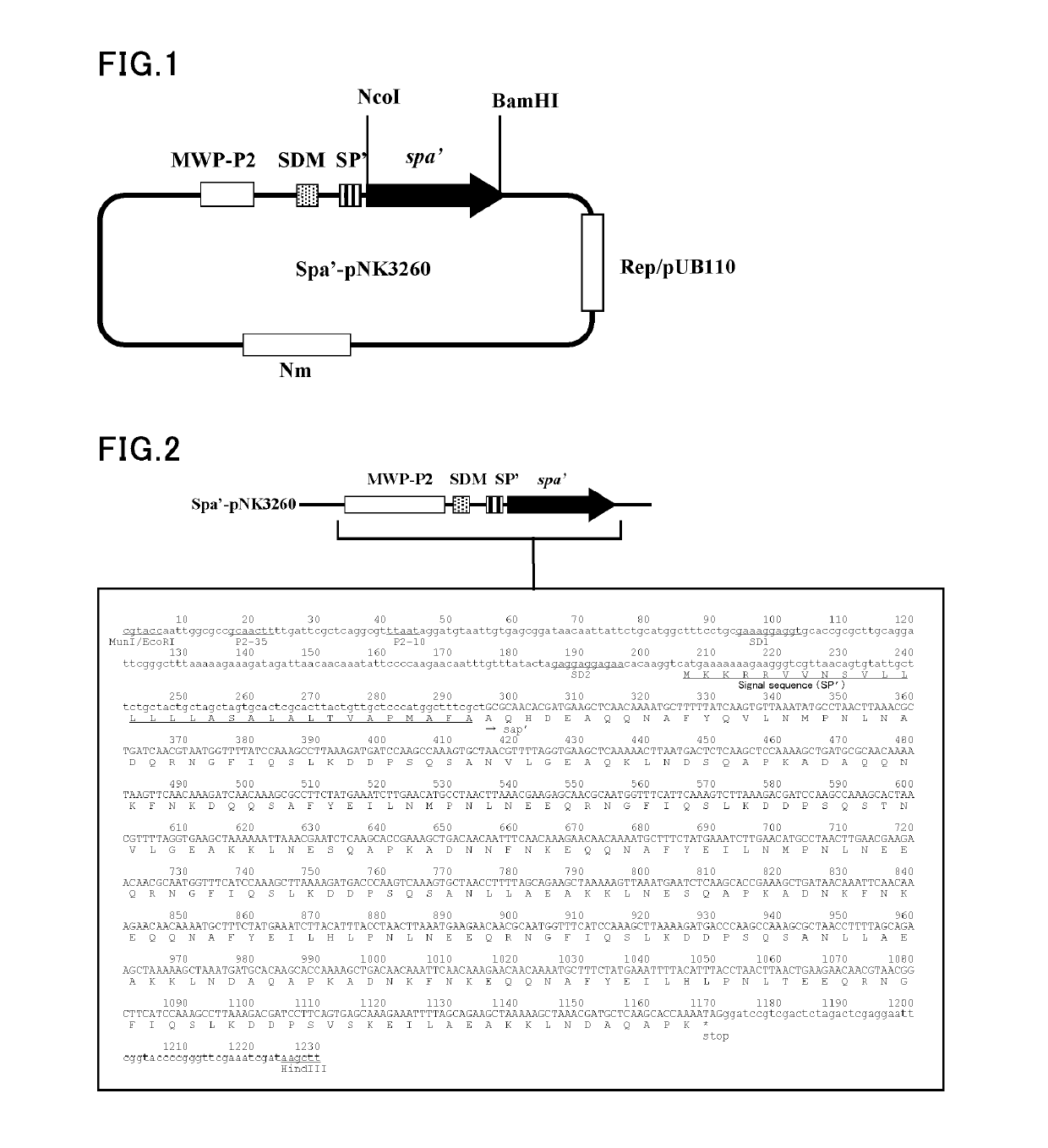Method for producing recombinant proteins using recombinant brevibacillus
a technology of recombinant brevibacillus and recombinant protein, which is applied in the field of recombinant protein production methods using recombinant microorganisms, can solve the problems of high production cost, less likely to be stably maintained in the cell, and less likely to be lost from the cell, so as to improve the yield of recombinant proteins, and reduce the cost
- Summary
- Abstract
- Description
- Claims
- Application Information
AI Technical Summary
Benefits of technology
Problems solved by technology
Method used
Image
Examples
examples
[0072]Hereinafter, the present invention is described in detail with reference to examples which, however, are not intended to limit the scope of the present invention. In the examples, the preparation and manipulation of recombinant DNA and other operations were carried out in accordance with the following experiment books, unless otherwise stated: (1) T. Maniatis, E. F. Fritsch, J. Sambrook, “Molecular Cloning / A Laboratory Manual” Vol. 2 (1989), Cold Spring Harbor Laboratory (US); and (2) ed. M. Muramatsu, “Laboratory Manual for Genetic Engineering” Vol. 3 (1996), Maruzen Publishing Co., Ltd. The reagents, restriction enzymes and other materials used in the examples were commercially available ones, unless otherwise stated.
(Production Example 1) Preparation of Transformant Expressing Five Connected Functional Variants of C Domain of Protein a
[0073]The amino acid sequence of a protein obtained by substituting Gly at position 29 of the C domain of Protein A by Ala and then connectin...
PUM
| Property | Measurement | Unit |
|---|---|---|
| temperature | aaaaa | aaaaa |
| temperature | aaaaa | aaaaa |
| temperature | aaaaa | aaaaa |
Abstract
Description
Claims
Application Information
 Login to View More
Login to View More - R&D
- Intellectual Property
- Life Sciences
- Materials
- Tech Scout
- Unparalleled Data Quality
- Higher Quality Content
- 60% Fewer Hallucinations
Browse by: Latest US Patents, China's latest patents, Technical Efficacy Thesaurus, Application Domain, Technology Topic, Popular Technical Reports.
© 2025 PatSnap. All rights reserved.Legal|Privacy policy|Modern Slavery Act Transparency Statement|Sitemap|About US| Contact US: help@patsnap.com

